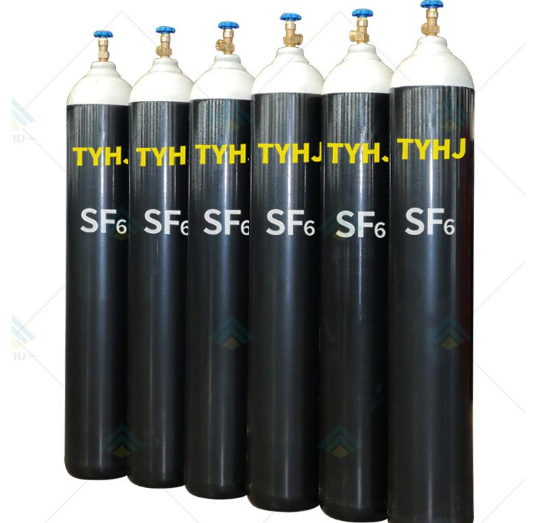What Is Sf6 Gas and Where It Is Used?
Sulphur hexafluoride, commonly referred to as SF6, is akin to carbon dioxide (CO2) in terms of its greenhouse gas characteristics. This synthetic gas, which is devoid of odor, plays a crucial role in the electrical sector, where it is essential for the safe and efficient functioning of power systems. Marked by its excellent stability, SF6 is non-toxic, non-flammable, and possesses electronegative attributes, which ensure that it remains unaffected by external reactions, preserving its functional integrity.
Historically, SF6 has been utilized across various sectors, including metal melting processes and insulating double-glazed windows. However, its main application today is firmly situated within the electrical industry. The technical challenges associated with alternatives have prevented the gas from being replaced, establishing SF6 as a key player in maintaining the reliability and safety of electrical frameworks.
What Makes SF6 Gas Unique?
The properties of SF6 gas render it highly desirable for insulation and other functions. This colorless, odorless gas boasts a vapor density about five times that of air, remaining in its gaseous form at pressures up to 250 PSI under normal temperatures.
Some of the essential attributes of SF6 that make it invaluable to electrical utilities include:
- Colorless and Odorless: SF6 is completely transparent and has no smell.
- High Density: Its density keeps it in vapor form until approximately 250 PSI at 68°F.
- Resistant to Temperature: SF6 can endure temperatures as high as 500°C.
- Non-Inflammable: This gas does not facilitate combustion, making it safe for use.
- Chemical Stability: SF6 has a firm molecular structure that guarantees its stable chemical behavior.
- Non-Toxic: It is safe for living organisms and poses no toxicity risk.
- Dielectric Strength: SF6 is prized for its exceptional insulating properties.
- Arc Quenching Ability: It effectively extinguishes electrical arcs.
- Electronegative Properties: SF6 does not easily react to form other compounds, ensuring sustained effectiveness.
The Extensive Use of SF6 Gas
About 80% of the world's SF6 gas consumption is linked to the electrical industry, underscoring its vital role in various applications there. A primary function of SF6 is to act as a dielectric insulator in both medium and high-voltage equipment. Instances of Gas Insulated Equipment (GIE) utilizing SF6 include:
- Circuit breakers
- Switchgear
- Disconnectors and grounding switches
- Gas-insulated cables and substations
- Capacitors
Alternative Applications Beyond Electricity
Aside from its mainstay in the electrical industry, SF6 gas finds a variety of applications:
Ophthalmology Applications:
In the field of ophthalmology, surgeons utilize SF6 gas during vitrectomy procedures to treat problems linked to the retina and vitreous body. After excising the vitreous gel, the gas is injected to fill the cavity, helping stabilize the retina and facilitating faster recovery because of its density.
Noise Reduction in Windows:
In specific double-glazed windows, a mixture of SF6 and argon gas fills the chamber between the glass panels, effectively dampening sound and reducing ambient noise.
Use in Magnesium Production:
SF6 also serves as a cover gas in magnesium production, particularly in countries like China. It prevents magnesium from reacting with atmospheric oxygen during manufacturing processes.
Etching in Semiconductor Production:
This gas is used as an etching material due to its density and large molecular size, which is integral in crafting semiconductor devices found in many electronic products.
Applications in Particle Accelerators:
In particle accelerators, SF6 gas is critical for insulation within the accelerator tanks. These devices accelerate charged particle beams at high velocities for varied purposes ranging from radiation therapy to national defense.
Importance of SF6’s Insulating Properties
SF6 is pivotal within the electrical utility sector due to its extraordinary dielectric strength and its highly effective insulating properties for medium and high-voltage equipment. Its ability to efficiently quench electrical arcs during current switching adds to its versatility.
Notably, SF6 exhibits high thermal conductivity, especially at increased temperatures, outperforming alternative dielectric gases such as air or nitrogen in thermal dissipation. This feature is crucial for thermal management in electrical applications.
265
0
0


Comments
All Comments (0)